The best travel camera is a versatile tool that captures your adventures with ease and quality, making it an essential companion for exploring Vietnam’s vibrant culture and stunning landscapes. At SIXT.VN, we understand the importance of preserving your travel memories, and choosing the right camera is the first step. Upgrade your travel photography with our top picks for capturing every moment, enhanced by our convenient travel services. Let us help you discover the perfect blend of convenience and quality for your photographic journey.
1. Why Should You Upgrade To A Dedicated Travel Camera?
Smartphones have significantly improved in recent years, so why invest in a dedicated camera for your travels? The answer lies in superior image quality, versatility, and creative control, all crucial for capturing the essence of Vietnam.
Smartphone cameras offer incredible software enhancements like HDR and panorama modes, making them convenient for quick snapshots. However, a dedicated camera, especially a Great Travel Camera, provides larger sensors, better lenses, and manual settings that unlock your creative potential.
According to research from Statista, in [2023], dedicated cameras still outperform smartphones in image quality and zoom capabilities. This means you can capture the vibrant street life of Hanoi or the stunning landscapes of Ha Long Bay with unparalleled clarity and detail.
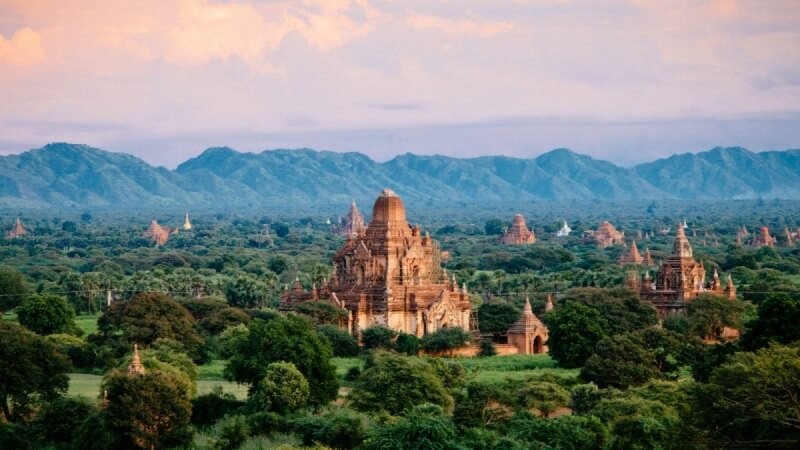 Panorama taken with an iPhone SE, showcasing the ease of use for wide scenic shots
Panorama taken with an iPhone SE, showcasing the ease of use for wide scenic shots
Exposure
1/900s ƒ/2.2 @ ISO 100
Focal Length
4.15mm
Camera
iPhone SE
Date & Time
April 10, 2017, 7:17 pm
With SIXT.VN, you can focus on capturing these moments without worrying about logistics. We offer seamless airport transfers, comfortable accommodations, and curated tours, ensuring your photographic journey through Vietnam is smooth and memorable.
2. What Makes A Camera Ideal For Travel In Vietnam?
A great travel camera is more than just a device; it’s a tool that enhances your travel experience. In Vietnam, where you might find yourself navigating bustling city streets one day and serene natural landscapes the next, versatility and portability are key.
Consider these essential features:
- Image Quality: Look for a camera with a large sensor to capture detailed and vibrant images.
- Versatility: Ensure it can handle various shooting conditions, from low-light environments to bright daylight.
- Portability: Opt for a lightweight and compact design that won’t weigh you down during your explorations.
For instance, imagine capturing the vibrant colors of Hoi An’s lanterns at night or the stunning beauty of the Mekong Delta. A camera that excels in low light and offers a good zoom range will be invaluable.
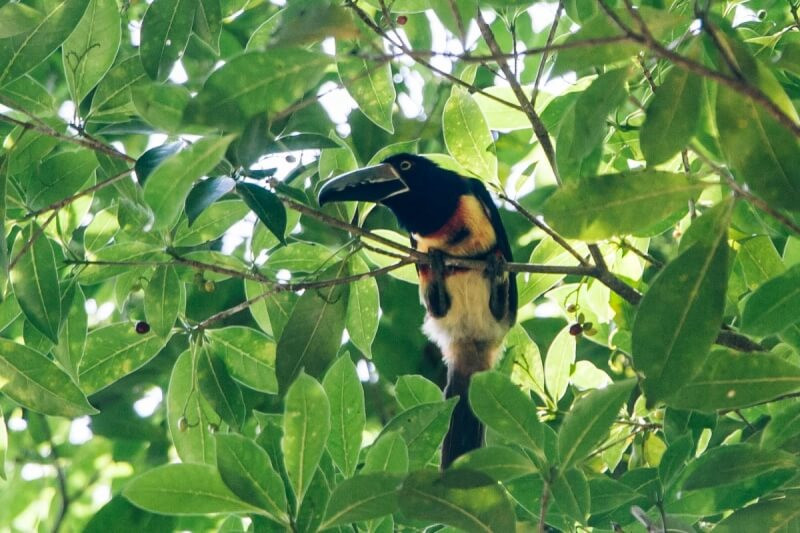 Image of a Toucan at Tikal, highlighting the importance of zoom capabilities in a travel camera
Image of a Toucan at Tikal, highlighting the importance of zoom capabilities in a travel camera
Exposure
1/100s ƒ/6.3 @ ISO 400
Focal Length
135mm
Camera
Canon EOS DIGITAL REBEL XTi
Date & Time
September 29, 2015, 11:41 am
With SIXT.VN, you can tailor your travel experience to your photographic needs. We offer personalized itineraries, ensuring you have the time and flexibility to capture the perfect shot, whether it’s a bustling market or a tranquil temple.
3. What Are The Key Features To Consider When Choosing A Travel Camera?
Selecting the perfect great travel camera involves understanding the importance of several key features and how they cater to the demands of travel photography. Here’s a detailed look:
3.1. Sensor Size
The sensor is the heart of your camera, directly impacting image quality. A larger sensor captures more light, resulting in clearer, more detailed images, especially in low-light conditions.
Tradeoff: Larger sensors typically mean larger and more expensive cameras and lenses.
As shown in the sensor size comparison image, full-frame sensors are the largest and offer the best image quality, favored by professional photographers. APS-C sensors, commonly found in consumer DSLRs and mirrorless cameras, provide a good balance of size and performance. Micro Four Thirds sensors are smaller but still offer excellent quality in a compact form factor. Point-and-shoot cameras usually have the smallest sensors.
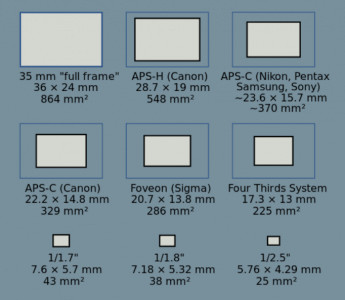 Sensor size comparison for a variety of camera types.
Sensor size comparison for a variety of camera types.
Sensor size comparison for a variety of camera types.
3.2. Lens Quality
The lens is crucial for capturing sharp and clear images. A high-quality lens can significantly improve your photos, especially when paired with a good sensor.
Tradeoff: Better lenses often mean larger sizes and higher costs.
A versatile lens with a good zoom range (e.g., 24-70mm) can cover a variety of shooting scenarios, from landscapes to portraits. For example, a fast lens (e.g., f/1.8 or f/2.8) allows more light, improving low-light performance and creating a shallow depth of field for beautiful bokeh.
3.3. Interchangeable Lenses
The ability to change lenses gives you incredible flexibility. You can choose the right lens for each situation, whether it’s a wide-angle for landscapes or a telephoto for wildlife.
Tradeoff: Carrying multiple lenses adds weight and complexity.
An interchangeable lens camera (ILC) allows you to adapt to different shooting conditions. For instance, you might use a wide-angle lens to capture the vastness of Ha Long Bay and a telephoto lens to zoom in on distant details in the mountains of Sapa.
3.4. Image Stabilization (IS)
Image stabilization helps reduce blur caused by camera shake, especially useful in low-light conditions or when shooting handheld.
Tradeoff: Newer cameras with better IS tend to be more expensive.
Good IS can make a significant difference, allowing you to capture sharp images without a tripod. This is particularly valuable when traveling, where setting up a tripod might not be feasible.
3.5. Size and Weight
A travel camera should be easy to carry around. A compact and lightweight camera won’t weigh you down, making it more likely you’ll bring it along on your adventures.
Tradeoff: Smaller cameras may have smaller sensors and fewer features.
Many photographers end up leaving their larger DSLRs at home due to their bulk and weight. A smaller, more portable camera is more likely to be used, ensuring you capture those unexpected moments.
3.6. Manual Settings
Having manual control over your camera settings allows you to fine-tune your shots. Adjusting aperture, shutter speed, and ISO can help you achieve the perfect exposure and creative effects.
Tradeoff: Cameras with manual settings often have a slightly larger form factor to accommodate physical dials and buttons.
Even if you start with automatic modes, the ability to switch to aperture priority or full manual mode will eventually be essential. This level of control is critical for capturing unique shots that reflect your vision.
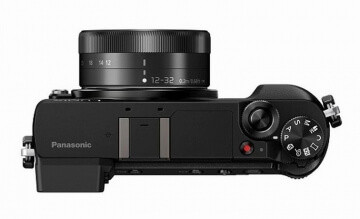 Image of a camera with accessible manual settings, showcasing ease of use
Image of a camera with accessible manual settings, showcasing ease of use
3.7. Wireless Connectivity
Wireless capabilities like Wi-Fi or Bluetooth make it easy to transfer photos to your smartphone or tablet for quick sharing on social media.
Tradeoff: Newer cameras with better connectivity may be more expensive.
Being able to quickly share your travel photos can enhance your experience, allowing you to keep friends and family updated on your adventures in Vietnam.
3.8. Cost
Cost is a significant factor for most people. A mid-range camera offers a good balance of features and affordability, making it a practical choice for travel.
Tradeoff: Spending more on a camera might mean sacrificing other aspects of your trip, such as tours or activities.
A higher-end camera might offer better performance, but it also increases the risk of loss, damage, or theft. A mid-range camera provides a good compromise, allowing you to capture great photos without breaking the bank.
4. What Are Some Bonus Features To Enhance Your Travel Photography?
In addition to the core features, certain bonus features can further enhance your travel photography experience in Vietnam:
- Video Capabilities: Most cameras now offer video recording, with some supporting 4K resolution. Image stabilization is crucial for smooth video footage.
- In-Camera HDR or Panorama: These features make it easy to capture high-dynamic-range images or wide panoramic scenes without post-processing.
- Weather Sealing: A weather-sealed camera can withstand splashes, dust, and humidity, making it ideal for adventurous travel.
- Portability: Being able to charge your camera via USB can be a lifesaver, especially when you’re on the go.
These additional features can provide extra convenience and flexibility, helping you capture stunning photos and videos during your travels in Vietnam.
5. What Is The Best Overall Travel Camera Recommendation For 2024?
My top recommendation for the great travel camera in 2024 is the Panasonic Lumix GX85/GX80. This mirrorless Micro Four Thirds camera strikes an excellent balance of image quality, versatility, and portability.
Buy the Panasonic Lumix GX85 Now
5.1. Why The Panasonic Lumix GX85/GX80 Stands Out
- Sensor Size: The Micro Four Thirds sensor is larger than those found in most smartphones and point-and-shoot cameras, providing excellent image quality.
- Interchangeable Lenses: The M43 system offers a wide range of lenses from Panasonic, Olympus, and third-party manufacturers, allowing you to tailor your setup to your specific needs.
- Image Stabilization: The 5-axis in-body image stabilization (IBIS) provides up to 4 stops of stabilization, allowing you to capture sharp handheld shots in low light.
- Size and Weight: The GX85 is compact and lightweight, making it easy to carry around all day.
- Manual Settings: The camera offers full manual controls, allowing you to fine-tune your settings and unleash your creativity.
- Wireless Connectivity: Built-in Wi-Fi allows you to easily transfer photos to your smartphone for sharing.
- Cost: The GX85 is incredibly affordable for a camera in its class, offering excellent value for money.
This camera truly transforms from a high-end point-and-shoot into a DSLR, offering you the best of both worlds.
5.2. Sensor Size: The Sweet Spot
The Panasonic GX85 utilizes a Micro Four Thirds sensor, providing a significant upgrade from smartphone sensors. It’s about 13 times larger than an iPhone sensor and twice the size of higher-end point-and-shoot sensors.
5.3. Choosing the Right Lens
Selecting the right lens is crucial for maximizing your travel photography. A versatile lens covering the 24-70mm range is ideal for most situations, allowing you to capture landscapes, portraits, and everyday scenes.
5.4. The Versatility of Interchangeable Lenses
Interchangeable lenses provide unmatched versatility, allowing you to adapt to various shooting scenarios. Whether you’re exploring European cobblestone streets or relaxing on Caribbean beaches, you can choose the perfect lens for the job.
5.5. Portability: Travel-Friendly Design
The Panasonic GX85’s compact size makes it an ideal travel companion. Its discreet design allows you to capture candid shots without drawing attention. Additionally, it supports USB charging, making it easy to recharge on the go.
5.6. Image Stabilization: Capturing Sharp Shots Handheld
The GX85’s 5-axis image stabilization allows you to capture sharp handheld shots, even in low light. This technology enables you to create stunning images without the need for a tripod.
5.7. Full Manual Control: Unleashing Your Creativity
Having full manual control is essential for capturing the perfect shot. The Panasonic GX85 offers the same level of control as a DSLR, allowing you to adjust aperture, shutter speed, and ISO to achieve your desired look.
5.8. Sharing Your Photos on the Go
The Panasonic GX85’s Wi-Fi capability allows you to quickly transfer photos to your smartphone for sharing on social media. While the process can be a bit finicky, it’s a convenient way to share your adventures with friends and family.
6. What Are Some Potential Drawbacks To Consider?
While the Panasonic GX85 is an excellent camera, there are a few potential drawbacks to consider:
- Complex Features: The camera’s numerous features can be overwhelming, and enabling one feature may disable others.
- Touchscreen Sensitivity: The touchscreen can be too sensitive, leading to accidental adjustments.
- Battery Life: The battery life is not great, so it’s recommended to carry spare batteries.
Despite these minor issues, the Panasonic GX85 remains an outstanding choice for travel photography.
7. How Does The Cost Compare To Other Travel Cameras?
The Panasonic GX85 is incredibly affordable for a camera in its class. It offers excellent value for money, competing with cameras in the class below it. For around $700, you can get the body and two lenses, making it an absolute steal.
8. What If I Prefer A Compact, Fixed-Lens Camera?
If you prefer a compact, fixed-lens camera, I recommend the Canon G7x Mark III. This camera offers a large 1-inch sensor, a versatile 24-100mm lens, and a fast aperture, making it an excellent choice for travel photography.
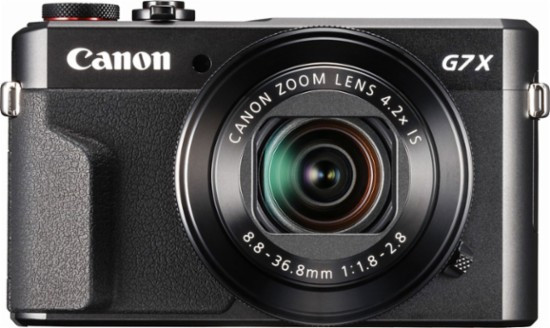 Canon G7x Mark III, a great compact travel camera
Canon G7x Mark III, a great compact travel camera
Buy the Canon G7x Mark III now
9. How Can SIXT.VN Enhance My Travel Photography Experience?
SIXT.VN offers a range of services that can enhance your travel photography experience in Vietnam:
- Airport Transfers: Start your trip stress-free with our reliable airport transfer services.
- Hotel Bookings: Choose from a variety of accommodations to suit your budget and preferences.
- Tours: Explore Vietnam’s most iconic destinations with our curated tours, designed to provide you with ample photo opportunities.
- Personalized Itineraries: Tailor your trip to your specific photographic goals, ensuring you capture the perfect shots.
With SIXT.VN, you can focus on capturing the beauty of Vietnam while we take care of the logistics.
10. How Can I Plan My Photography-Focused Trip To Vietnam With SIXT.VN?
Planning a photography-focused trip to Vietnam with SIXT.VN is easy. Simply follow these steps:
- Visit our website: SIXT.VN
- Explore our range of services: Airport transfers, hotel bookings, and tours.
- Contact our customer service team: Discuss your photographic goals and preferences.
- Receive a personalized itinerary: We’ll tailor a trip to ensure you have ample opportunities to capture stunning photos.
- Book your services: Sit back and relax while we take care of the logistics.
With SIXT.VN, your dream photography trip to Vietnam is just a few clicks away.
Address: 260 Cau Giay, Hanoi, Vietnam
Hotline/Whatsapp: +84 986 244 358
Website: SIXT.VN
Choosing the right great travel camera is essential for capturing the beauty of Vietnam. Whether you opt for the versatile Panasonic GX85 or the compact Canon G7x Mark III, remember that the best camera is the one you have with you. And with SIXT.VN, you can focus on capturing those unforgettable moments while we take care of the rest.
FAQ About The Best Travel Camera
1. What is the most important feature of a travel camera?
The most important feature of a travel camera is its versatility. It should be able to handle a variety of shooting situations, from landscapes to portraits, and be compact and lightweight enough to carry around all day.
2. Is a smartphone camera good enough for travel photography?
While smartphone cameras have improved significantly, a dedicated camera offers superior image quality, zoom capabilities, and manual control. This can make a big difference in capturing the beauty of Vietnam.
3. What is the ideal sensor size for a travel camera?
A Micro Four Thirds sensor provides a good balance of image quality and portability. It’s larger than smartphone sensors but smaller than APS-C or full-frame sensors, making it a practical choice for travel.
4. Should I choose a camera with interchangeable lenses?
If you want maximum versatility, a camera with interchangeable lenses is a great choice. It allows you to choose the right lens for each situation, whether it’s a wide-angle for landscapes or a telephoto for wildlife.
5. What is image stabilization, and why is it important?
Image stabilization helps reduce blur caused by camera shake, especially in low-light conditions or when shooting handheld. It can make a big difference in capturing sharp, clear images without a tripod.
6. What manual settings should I learn to use on my travel camera?
Learning to use aperture priority and manual modes will give you more control over your photos. Adjusting aperture, shutter speed, and ISO can help you achieve the perfect exposure and creative effects.
7. How important is wireless connectivity on a travel camera?
Wireless connectivity allows you to quickly transfer photos to your smartphone for sharing on social media. It’s a convenient way to share your adventures with friends and family.
8. What is a good budget for a travel camera?
A mid-range camera offers a good balance of features and affordability. Spending around $500-$1000 will get you a camera that can capture great photos without breaking the bank.
9. What are some essential accessories for my travel camera?
Essential accessories include extra batteries, a memory card, a camera bag, and a tripod. These items will help you get the most out of your travel camera.
10. How can SIXT.VN help me plan my photography trip to Vietnam?
SIXT.VN offers a range of services, including airport transfers, hotel bookings, and tours, that can enhance your travel photography experience in Vietnam. We can also create personalized itineraries to ensure you have ample opportunities to capture stunning photos.



